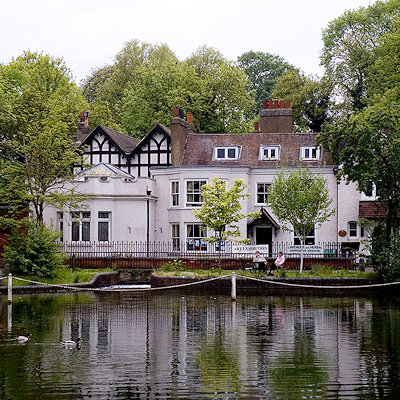
Like us on Facebook
PLACE NAMES


 
|
|
Carshalton
|

|
|
|
To the south of the area now known as Carshalton, remains of artefacts dating from the Neolithic to the Iron Age have been found, suggesting that this was an early place of habitation. Prior to the Norman Conquest it is recorded that there were five manors in this location owned by five freemen.
The village lay within the Anglo-Saxon administrative division of Wallington hundred.
Carshalton appears in Domesday Book as Aultone. It was held by Goisfrid (Geoffrey) de Mandeville. Its domesday assets were: 3½ hides; 1 church, 10 ploughs, 1 mill, 22 acres of meadow, woodland worth 2 hogs.
In the Domesday era there was a church and a water mill in Carshalton, which was then still made up of a number of hamlets dotted around the area, as opposed to a single compact village.
In the Middle Ages the land in the village was generally farmed in the form of a number of open fields, divided into strips. The number of strips which each land owner possessed was based roughly on his wealth. There was also an area of open downland in the south of the parish for grazing sheep.
Carshalton was known for its springs; these may have given the place its name Cars - Aul - ton. Aul means well or spring. A ton is a farm which was in some way enclosed. The meaning of the Cars element is uncertain but early spellings (Kersaulton and Cresaulton) may indicate connection with a cross or perhaps cress, watercress having been grown locally.
In his book History of the Worthies of England, the 17th century historian Thomas Fuller refers to Carshalton for its walnuts and trout.
Land was primarily put to arable use and the river Wandle gave rise to manufacturing using water power. A water mill to grind corn was mentioned in the Domesday Book. By the end of the 18th century it was recorded that there were several mills for the production of paper and parchment, leather, snuff, log-wood and seed oil. There were also bleaching grounds for calico.
There were timber framed houses from the end of the Middle Ages, and brick and wooden weather boarded houses from the 17th, 18th and 19th centuries. By the middle of the 19th century Carshalton's population was 2,411, making it, at the time, the largest village in what was to become the London Borough of Sutton. It had a very varied character with houses for the wealthy at one extreme and tenements in back yards at the other. In 1847 a railway line was laid from Croydon to Epsom through Carshalton, but the first station was built in fields south of Wallington. A station in the village itself was not established until 1868 when the Sutton to Mitcham Line was constructed. The development of Carshalton got into its stride in the early 1890s when the Carshalton Park Estate was sold for housing development.
During the Victorian era and into the early 20th century, Carshalton was known for its lavender fields, but the increasing land demand for residential building put an end to commercial growing.
Honeywood is a large Grade II listed house at the western end of the picturesque Carshalton Ponds. At its earliest, it dates from the 17th century but it has been much extended and restored since. In particular, during the period 1896 to 1903 when it was owned by one John Pattinson Kirk, a London merchant, a large Edwardian wing was added to the south side. The 17th century element lies behind the façade in the form of a flint and chalk chequer building. The house now plays host to the London Borough of Sutton's Museum, and has a local history collection, including objects that date back to the Bronze Age. There is a tea room and a shop.
The museum has recently been refurbished, reopening in May 2012 with enhanced features. There are now expanded displays, including an interactive map, about the River Wandle and its influence on the life of the area, and a collection of Edwardian toys on display in the "Childhood Room". The interior was restored to its 1903 colour scheme, and the refurbishment also included a restoration of the Edwardian billiards room, its table and fittings, the drawing Room and the bathroom.
|
 Feel free to Email me any additions or corrections Feel free to Email me any additions or corrections
LINKS AVAILABLE TO YOUR SITE
| |





